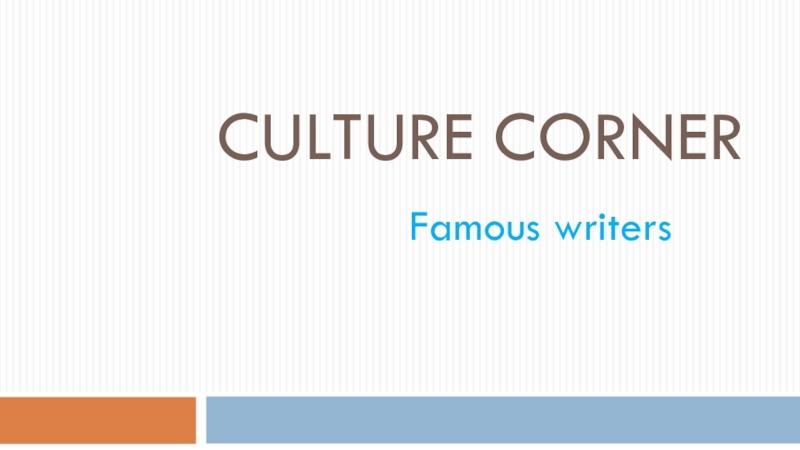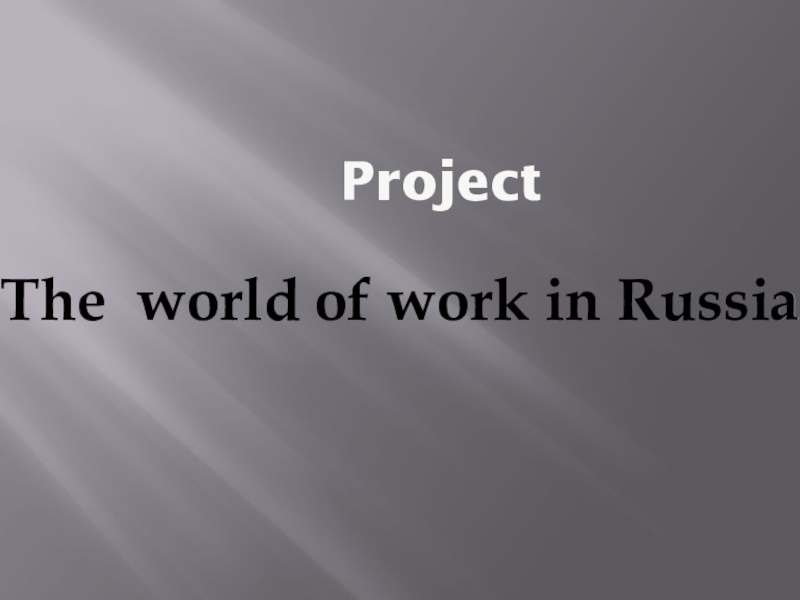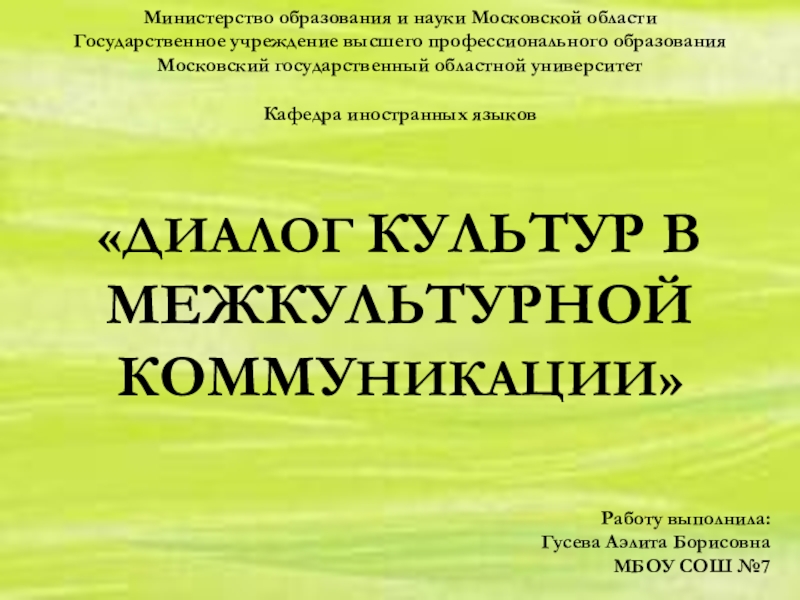live in Scotland. Edinburgh is the capital of Scotland. There are two large cities here: Glasgow and Aberdeen. Scotland is full of mountains and lakes. The highest mountain is Ben Nevis. There are a lot of rivers. The sea nearly cuts the mountains into parts.
A long time ago the Scots built many large churches beside the river. These churches were called Abbeys. The Scots built Melrose Abbey in 1136 but the English destroyed it in 1544. In the days of the Abbeys, the hills and farms were full of sheep and they still are.
Some people go to Scotland by plane. Some people go there by ship. There are trains and buses to Glasgow and Edinburgh from London every day.
- Главная
- Разное
- Образование
- Спорт
- Естествознание
- Природоведение
- Религиоведение
- Французский язык
- Черчение
- Английский язык
- Астрономия
- Алгебра
- Биология
- География
- Геометрия
- Детские презентации
- Информатика
- История
- Литература
- Математика
- Музыка
- МХК
- Немецкий язык
- ОБЖ
- Обществознание
- Окружающий мир
- Педагогика
- Русский язык
- Технология
- Физика
- Философия
- Химия
- Шаблоны, фоны, картинки для презентаций
- Экология
- Экономика
Презентация, доклад по английскому языку на тему Scotland
Содержание
The Coat of Arms The Royal coat of arms of Scotland was the official coat of arms of the Kingdom of Scotland until the Acts of Unionin 1707. The blazon of the arms began to undergo significant
Слайд 2The Coat of Arms
The Royal coat of arms of Scotland
was the official coat of arms of the Kingdom of Scotland until the Acts of Unionin 1707. The blazon of the arms began to undergo significant changes following the Union of the Crowns in 1603, and eventually became the Royal coat of arms of the United Kingdom used in Scotland.
The pre-Union version featured a shield depicting the same elements that were on the Royal Standard of Scotland (the red lion rampant on a yellow field surrounded by the decorated double border). While the shield has undergone many changes over the centuries, the rest of the elements of the Royal coat of arms, however, have remained constant. Atop the shield sits a full-faced helm of damasked gold with six bars and ermine-lined gold mantling. Upon the helm sits the crest, a forward-facing red lion wearing the Crown of Scotland and holding both the Sceptre and the Sword of State. Above the crest is the motto "In Defens," a contraction of In My Defens God Me Defend, which is the opening line from an old Scots prayer
The pre-Union version featured a shield depicting the same elements that were on the Royal Standard of Scotland (the red lion rampant on a yellow field surrounded by the decorated double border). While the shield has undergone many changes over the centuries, the rest of the elements of the Royal coat of arms, however, have remained constant. Atop the shield sits a full-faced helm of damasked gold with six bars and ermine-lined gold mantling. Upon the helm sits the crest, a forward-facing red lion wearing the Crown of Scotland and holding both the Sceptre and the Sword of State. Above the crest is the motto "In Defens," a contraction of In My Defens God Me Defend, which is the opening line from an old Scots prayer
Слайд 3The Scottish Flag
The Scottish flag is a white cross on a
blue background. The cross is the cross of Saint Andrew. Saint Andrew was a disciple of Jesus.
The national flag of Scotland, the Saltire or St. Andrew's Cross, dates (at least in legend) from the 9th century, and is thus the oldest national flag still in use. The Saltire now also forms part of the design of the Union Flag.
Слайд 4Anthem
Hark when the night is falling
Hear! hear the pipes are calling,
Loudly
and proudly calling,
Down thro' the glen.
There where the hills are sleeping,
Now feel the blood a-leaping,
High as the spirits
of the old Highland men.
Refrain
Towering in gallant fame,
Scotland my mountain hame,
High may your proud
standard gloriously wave,
Land of my high endeavour,
Land of the shining rivers,
Land of my heart for ever,
Scotland the brave.
High in the misty Highlands,
Out by the purple islands,
Brave are the hearts that beat
Beneath Scottish skies.
Wild are the winds to meet you,
Staunch are the friends that greet you,
Kind as the love that shines
from fair maidens' eyes.
Refrain
Far off in sunlit places,
Sad are the Scottish faces,
Yearning to feel the kiss
Of sweet Scottish rain.
Where tropic skies are beaming,
Love sets the heart a-dreaming,
Longing and dreaming for the homeland again.
→http://tekstanet.ru/4/Gimn-Shotlandii/tekst-pesni-Scotland-the-Brave
Слайд 5The Thistle
Common throughout the highlands, islands and lowlands of Scotland, the
prickly purple thistle has been Scotland's national emblem for centuries. This proud and regal plant, which grows to a height of five feet, has no natural enemies because of the vicious spines that cover and protect it like a porcupine.
There are several different legends that tell how the thistle became Scotland's symbol, but most date from the reign of Alexander III and in particular the events surrounding the Battle of Largs in 1263.
It is often forgotten, that for hundreds of years much of Scotland was part of the Kingdom of Norway. By 1263 however, Norway seems to have had little interest in their former territory. However, that was until King Alexander III proposed to buy back the Western Isles and Kintyre from the Norse King Haakon IV. The thought of relieving King Alexander of some of his riches and territories appears to have re-kindled Norse interest in Scotland.
Late in the summer of 1263 King Haakon of Norway, now intent on conquering the Scots, set off with a sizeable fleet of longships for the Scottish coast. Gales and fierce storms forced some of the ships onto the beach at Largs in Ayrshire, and a Norwegian force was landed.
There are several different legends that tell how the thistle became Scotland's symbol, but most date from the reign of Alexander III and in particular the events surrounding the Battle of Largs in 1263.
It is often forgotten, that for hundreds of years much of Scotland was part of the Kingdom of Norway. By 1263 however, Norway seems to have had little interest in their former territory. However, that was until King Alexander III proposed to buy back the Western Isles and Kintyre from the Norse King Haakon IV. The thought of relieving King Alexander of some of his riches and territories appears to have re-kindled Norse interest in Scotland.
Late in the summer of 1263 King Haakon of Norway, now intent on conquering the Scots, set off with a sizeable fleet of longships for the Scottish coast. Gales and fierce storms forced some of the ships onto the beach at Largs in Ayrshire, and a Norwegian force was landed.
Слайд 6Edinburgh
Edinburgh, the capital of
Scotland, is one of Britain's most attractive cities. It's a city for people who like to walk. One is never far from green parks, gardens and hills, even in the main shopping areas. It's a busy modern city, but history is everywhere.
At the top of the highest hill in Edinburgh is Edinburgh Castle. It was the home of Scotland's royal family, until 1603 when King James the 6th of Scotland became king of England and moved to London. The road which begins at the castle and heads east is called Royal Mile.
At the other end of the Royal Mile is Hollyroodhouse. It was built by a Scottish king before Scotland and England were united to form Great Britain. Now it is a second home for the Queen or her children, who usually visit Edinburgh in the summer. When the royal family is not there, the palace is open to tourists. There are many interesting things to see in the Palace.
There are nine hills in Edinburgh. They are long-dead volcanoes. From the tops of these hills, you can see two bridges,a modern bridge for cars, and an old rail bridge, which has carried trains to the Highlands for more than a hundred years.
The Highlands of Scotland are mountainous and wild.
At the top of the highest hill in Edinburgh is Edinburgh Castle. It was the home of Scotland's royal family, until 1603 when King James the 6th of Scotland became king of England and moved to London. The road which begins at the castle and heads east is called Royal Mile.
At the other end of the Royal Mile is Hollyroodhouse. It was built by a Scottish king before Scotland and England were united to form Great Britain. Now it is a second home for the Queen or her children, who usually visit Edinburgh in the summer. When the royal family is not there, the palace is open to tourists. There are many interesting things to see in the Palace.
There are nine hills in Edinburgh. They are long-dead volcanoes. From the tops of these hills, you can see two bridges,a modern bridge for cars, and an old rail bridge, which has carried trains to the Highlands for more than a hundred years.
The Highlands of Scotland are mountainous and wild.
Слайд 7Glasgow
Glasgow is the largest city in Scotland
and the third largest in the United Kingdom. Before 1750 Glasgow was a small town. It had a cathedral and a university but it was not a rich town. After 1707 Scottish ships could go to the English colonies in America. Ships brought tobacco to Glasgow and took back Scottish goods. In 1776, the American colonies became independent and the tobacco trade stopped. Heavy industry began to develop. It used coal and iron from the Clyde valley. Glasgow became rich but very dirty.
Glasgow is famous for football teams: Rangers and Celtic. Most people in Glasgow are fans of one of teams. When they play against each other, thousands of fans go to watch. Rangers and Celtic have won more football competitions in Scotland than all the other Scottish teams.
Glasgow has a busy cultural life. A lot of musicians, actors and singers come to Glasgow to give concerts. It the evenings the opera house, the cinemas and the concert halls are full. In cafes and pubs small groups sing, act, read poetry.
Glasgow is famous for football teams: Rangers and Celtic. Most people in Glasgow are fans of one of teams. When they play against each other, thousands of fans go to watch. Rangers and Celtic have won more football competitions in Scotland than all the other Scottish teams.
Glasgow has a busy cultural life. A lot of musicians, actors and singers come to Glasgow to give concerts. It the evenings the opera house, the cinemas and the concert halls are full. In cafes and pubs small groups sing, act, read poetry.












